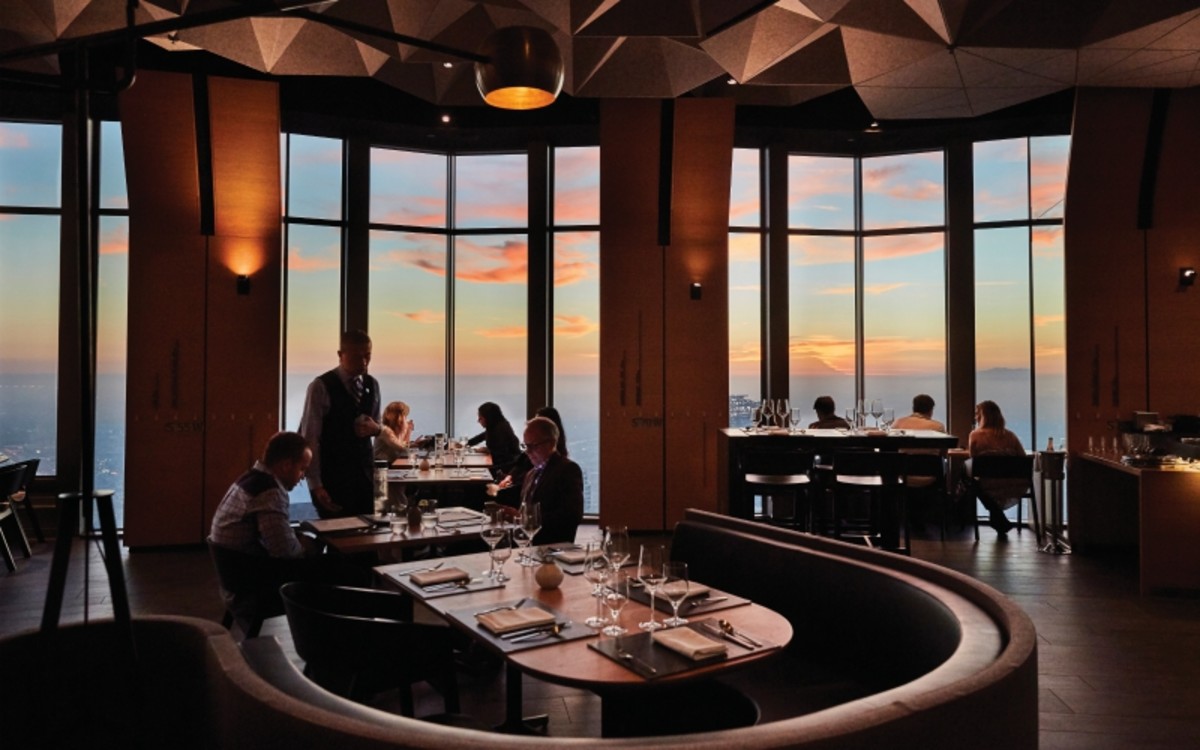Instagrammable Restaurants Islamabad: Picture-Perfect Dining Knowledge
Savor Authentic Asian Cuisine With a Pan-Asian Spin for a Cooking Adventure
Beginning on a cooking trip via authentic Asian cuisine, improved with a Pan-Asian spin, supplies a special possibility to check out the rich tapestry of tastes that specify the region's varied cooking practices. This experience welcomes you to savor the elegant balance of tastes-- sweet, salty, spicy, and sour-- integrated by fragrant natural herbs and seasonings. Visualize the innovative fusion of Thai curry and ramen or the unexpected delight of sushi burritos. As you ponder these enticing dishes, take into consideration the social stories and historic influences that shape them, each bite providing a story waiting to be discovered.

Exploring Pan-Asian Flavors
In the realm of worldwide gastronomy, Pan-Asian food stands apart for its exceptional diversity and the unified interplay of tastes from various Oriental societies. This culinary strategy celebrates the unique active ingredients and rich practices located across the continent, developing a tapestry of tastes that is both interesting and enjoyable. Key to Pan-Asian food is its capacity to balance contrasting tastes-- sweet, salty, spicy, and sour-- while highlighting the quality and top quality of each ingredient.
From the umami-rich soy sauce of Japan to the fiery chili peppers of Thailand, Pan-Asian food supplies a considerable palette of flavors. These aspects are usually integrated in innovative means, enhancing dishes with layers of intricacy. For circumstances, making use of aromatic natural herbs such as lemongrass and cilantro, common in Vietnamese and Thai food, includes a rejuvenating illumination to recipes, while the incorporation of coconut milk delivers a velvety, abundant appearance.
The emphasis on fresh produce and aromatic seasonings ensures that each meal is not only a banquet for the palate yet also for the senses. Pan-Asian food welcomes restaurants to start a cooking trip, discovering the substantial and differed landscapes of Eastern gastronomy with every bite.
Blend Recipes to Attempt
While Pan-Asian cuisine is commemorated for its standard flavors, the modern-day culinary landscape is significantly embracing blend meals that mix these traditional elements with impacts from various other regions. This cutting-edge technique not just honors the rich heritage of Eastern cookeries yet also presents novel preference experiences that appeal to contemporary tastes.
An archetype of such a blend dish is the Korean-Mexican taco, where marinaded bulgogi beef is covered in a warm tortilla, covered with kimchi and a zesty gochujang-infused salsa. This combination weds the bold, mouthwatering tastes of Korea with the dynamic, fresh components of Mexican food. Likewise, sushi burritos have actually gained popularity, joining together the delicate creativity of Japanese sushi with the passionate, hand-held comfort of a burrito, typically including combination ingredients like tempura shrimp and avocado with a drizzle of wasabi mayo.
Another significant dish is Thai curry ramen, which infuses the velvety, aromatic spices of Thai curry into the comforting broth of standard Japanese ramen, producing a harmonious mix that entices the senses. These blend dishes prolong past plain uniqueness; they represent a cooking discussion between cultures, encouraging exploration and technology on the planet of Pan-Asian food.
Necessary Active Ingredients and Spices
To genuinely value Pan-Asian cuisine, one should recognize the crucial ingredients and spices that create its structure. This varied cooking style draws from an abundant tapestry of Eastern practices, using a harmonious blend of tastes and structures.
Aromatic components are pivotal, with lemongrass, ginger, and garlic being common across various Pan-Asian recipes. These components provide an aromatic base that enhances the intricacy of flavors. Seasonings such as celebrity anise, cardamom, and cinnamon introduce heat and character, resembling influences from areas like China and India.

Food Preparation Strategies and Tips
Mastering the art of Pan-Asian cuisine needs knowledge with its distinctive cooking methods, each adding to the vibrant tapestry of tastes this cooking practice is celebrated for. Central to these techniques is the stir-fry, a quick cooking method see this page that protects the nutritional integrity and brilliant colors of components. Utilizing a wok, the stir-fry method enables also heat distribution, crucial for accomplishing the characteristic texture and flavor equilibrium of Pan-Asian meals.
One more basic strategy is steaming, particularly prevalent in Chinese cuisine. This gentle approach preserves the all-natural tastes and nutrients of ingredients, making it ideal for seafood and vegetables. Dumplings, a cherished staple, usually gain from steaming, causing soft, succulent appearances.
Barbecuing, likewise important, gives smoky midsts to recipes such as Korean bulgogi or Japanese yakitori (Romantic restaurants Islamabad). This method often entails marinading components, Click This Link permitting flavors to penetrate deeply prior to cooking over an open fire or hot plate
Lastly, mastering the art of balancing flavors-- pleasant, sour, salted, bitter, and umami-- is critical. Properly layering these components can elevate a recipe from average to amazing, supplying a facility and satisfying culinary experience that symbolizes the essence of Pan-Asian food.
Eating Experiences Worldwide
Across the globe, Pan-Asian food supplies an unparalleled dining experience, commemorated for its rich tapestry of flavors and vivid presentations. This cooking sensation has gone beyond social borders, catching the hearts and palates of food lovers worldwide. In multicultural cities like New York, London, and Sydney, Pan-Asian restaurants function as melting pots where culinary practices from Thailand, Japan, China, and beyond assemble, giving diners with an eclectic mix of meals that highlight the area's diversity.
The worldwide allure of Pan-Asian cuisine depends on its capacity to offer both authenticity and advancement. Cooks skillfully wed conventional active ingredients such as lemongrass, soy sauce, and miso with contemporary strategies, causing recipes that are both refreshingly brand-new and familiar. This fusion allows diners to start a cooking journey that values heritage while welcoming modernity.
Furthermore, dining experiences are raised with thoughtfully developed environments that reflect the ethos of Pan-Asian looks. From minimal Japanese-inspired interiors to dynamic Thai-themed areas, each restaurant provides a special atmosphere that enhances the cooking offerings. Therefore, clients are not merely taking in a dish yet partaking in a social experience, making Pan-Asian dining a genuinely international sensation.
Verdict
The exploration of Pan-Asian food supplies a profound understanding of the elaborate interaction of flavors and culinary customs across Asia. By welcoming blend recipes such as Thai curry ramen and sushi burritos, the cooking journey not just highlights the flexibility of traditional ingredients but additionally showcases innovative modern-day methods. This gastronomic adventure, improved by cooking approaches and essential seasonings, provides a distinct possibility to appreciate the multiculturalism and culinary creativity that specify Pan-Asian cuisine on an international range.
Getting started on a cooking trip via genuine Oriental cuisine, enhanced with a Pan-Asian twist, uses an one-of-a-kind chance to discover the abundant tapestry of flavors that specify the area's diverse cooking traditions.In the world of worldwide gastronomy, Pan-Asian food stands out for its exceptional variety and the harmonious interaction of flavors from numerous Asian societies. Key to Pan-Asian food is its ability to balance contrasting flavors-- sweet, salty, spicy, and sour-- while highlighting the freshness and top quality of each component.
